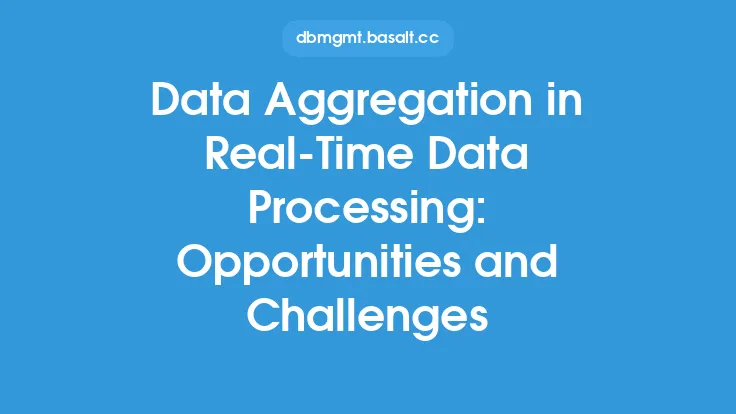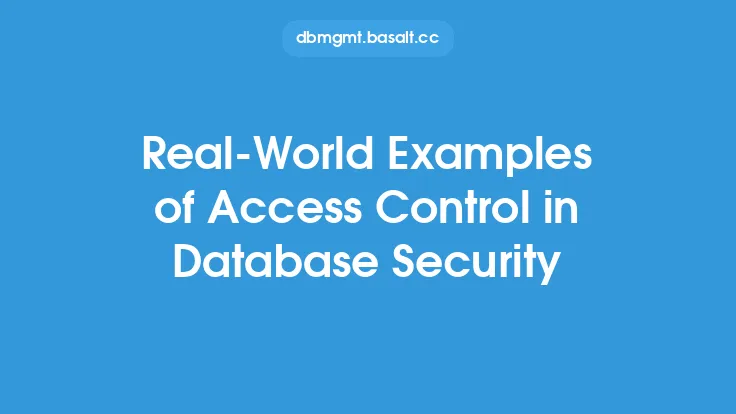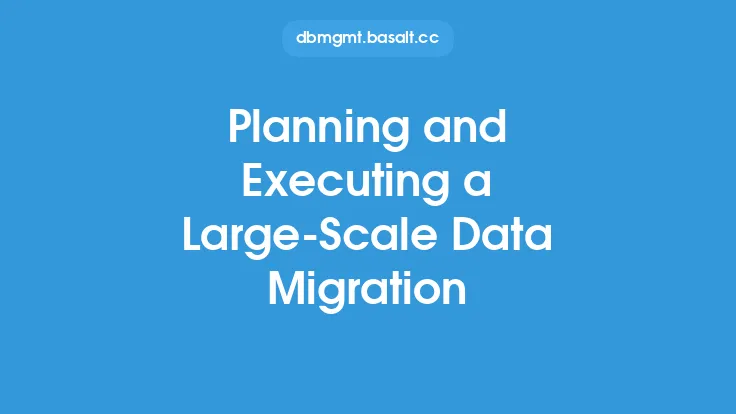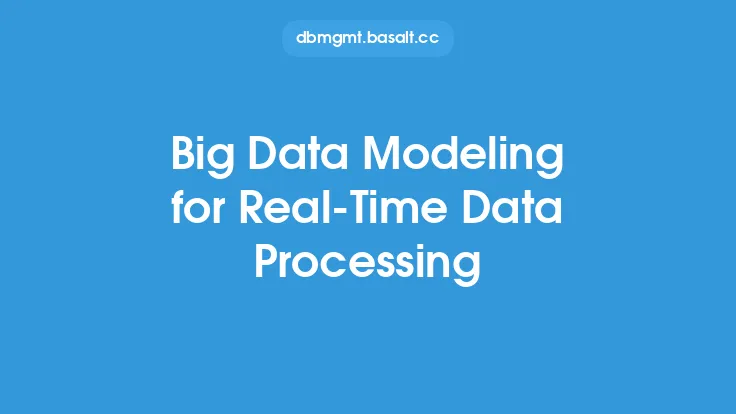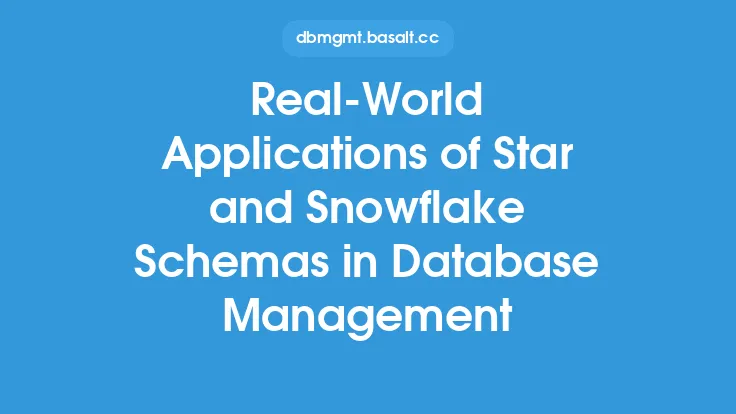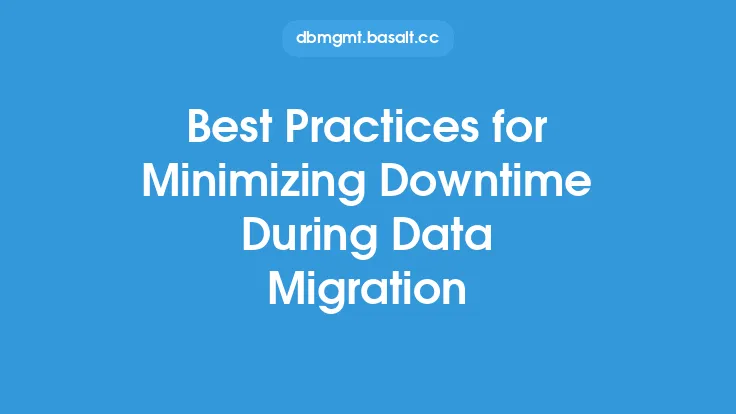When it comes to data migration, there are numerous factors to consider, and the process can be complex and time-consuming. Many organizations have undergone data migration projects, and from their experiences, valuable lessons can be learned. These lessons can help inform and guide future data migration projects, reducing the risk of errors, delays, and cost overruns. In this article, we will explore some of the key lessons learned from real-world data migration experiences, highlighting the importance of careful planning, data validation, and testing.
Introduction to Data Migration Challenges
Data migration involves transferring data from one system, format, or storage device to another. This process can be necessary for various reasons, such as upgrading to a new database management system, consolidating data from multiple sources, or moving data to the cloud. However, data migration projects often encounter challenges, including data inconsistencies, formatting issues, and compatibility problems. Additionally, the sheer volume of data being migrated can be overwhelming, making it difficult to ensure data integrity and accuracy.
Understanding the Importance of Pre-Migration Planning
One of the most critical lessons learned from real-world data migration experiences is the importance of pre-migration planning. This phase involves assessing the current state of the data, identifying potential issues, and developing a comprehensive migration plan. Pre-migration planning should include tasks such as data profiling, data cleansing, and data transformation. Data profiling helps to identify data quality issues, such as duplicates, inconsistencies, and missing values. Data cleansing involves correcting or removing erroneous data, while data transformation prepares the data for migration by converting it into the required format.
Data Validation and Verification
Data validation and verification are essential steps in the data migration process. Validation involves checking the data for errors, inconsistencies, and compliance with business rules. Verification, on the other hand, ensures that the migrated data is accurate, complete, and consistent with the source data. These steps can be time-consuming, but they are crucial in ensuring data integrity and preventing errors that can have significant consequences. Automated data validation and verification tools can help streamline the process, reducing the risk of human error and improving overall efficiency.
The Role of Data Governance in Migration Projects
Data governance plays a critical role in data migration projects, as it ensures that data is managed and protected throughout the migration process. Data governance involves establishing policies, procedures, and standards for data management, including data security, data quality, and data compliance. Effective data governance helps to prevent data breaches, ensures data integrity, and promotes data consistency. It also helps to identify and mitigate risks associated with data migration, such as data loss, corruption, or unauthorized access.
Technical Considerations for Data Migration
From a technical perspective, data migration involves several considerations, including data format, data structure, and data storage. Data format refers to the way data is organized and represented, such as CSV, JSON, or XML. Data structure refers to the relationships between data entities, such as tables, indexes, and views. Data storage refers to the physical location of the data, such as on-premises, cloud-based, or hybrid. Technical considerations also include the choice of migration tools, such as ETL (Extract, Transform, Load) software, data integration platforms, or custom scripts.
Best Practices for Data Migration Testing
Testing is a critical phase of the data migration process, as it ensures that the migrated data is accurate, complete, and consistent with the source data. Best practices for data migration testing include developing a comprehensive testing plan, creating test cases and scripts, and conducting thorough testing of the migrated data. Testing should include validation of data formats, data structures, and data relationships, as well as verification of data integrity and consistency. Automated testing tools can help streamline the testing process, reducing the risk of human error and improving overall efficiency.
Post-Migration Activities and Monitoring
After the data migration is complete, post-migration activities and monitoring are essential to ensure that the migrated data is accurate, complete, and consistent with the source data. Post-migration activities include data reconciliation, data validation, and data verification. Data reconciliation involves comparing the migrated data with the source data to identify any discrepancies or errors. Data validation and verification involve checking the migrated data for errors, inconsistencies, and compliance with business rules. Monitoring involves tracking data usage, data performance, and data security to ensure that the migrated data is secure, accessible, and usable.
Conclusion and Future Directions
In conclusion, lessons learned from real-world data migration experiences highlight the importance of careful planning, data validation, and testing. Pre-migration planning, data governance, and technical considerations are critical factors in ensuring a successful data migration project. Best practices for data migration testing, post-migration activities, and monitoring are also essential in ensuring data integrity and accuracy. As data migration projects continue to evolve and become more complex, it is essential to stay informed about the latest trends, tools, and technologies in data migration. By applying the lessons learned from real-world data migration experiences, organizations can reduce the risk of errors, delays, and cost overruns, ensuring a successful and seamless data migration project.
